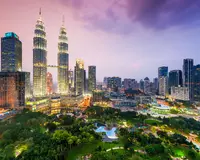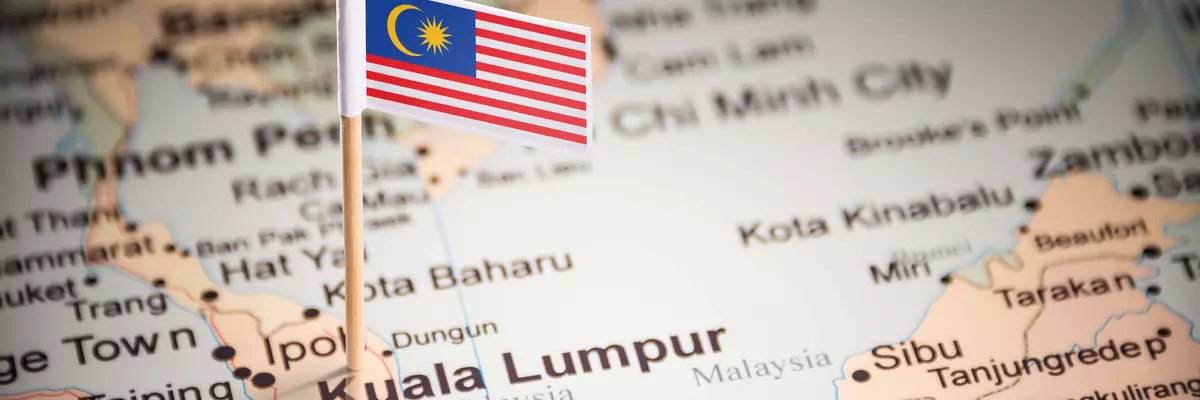
The climate year of Malaysia
Malaysia is located in the center of Southeast Asia and is divided into two sections: West Malaysia, which lies on the Malay Peninsula just south of Thailand, and East Malaysia, which forms part of the island of Borneo. As a result of this division, there are major climatic differences depending on the region. In West Malaysia, except for a small region near the Thai border, the climate is equatorial, providing high temperatures and humid air year-round. Variations are small, and rainfall is also constant throughout the year. In the north of Borneo, where East Malaysia is located, on the other hand, there is a tropical monsoon climate, with a short dry season and a longer rainy season with heavy rainfall. The influence of the monsoon, resulting from the proximity to the equator, is responsible for the varying degrees of fluctuation.
General information about Malaysia
Especially among backpackers, the country has been highly popular for years. This is primarily due to the enormous cultural diversity, which can be experienced most intensively in the UNESCO World Heritage City of Georgetown with its famous cookshops and street artists. The fast-growing capital Kuala Lumpur is known for its striking Petronas Twin Towers and the historic Batu Caves, and the world's largest shopping mall is also worth a visit. Nature lovers are spoilt for choice in both parts of Malaysia: In West Malaysia, the oldest rainforest area on our planet and the densely vegetated Cameron Highlands stand out with the Tamen Negara National Park, while East Malaysia scores with the world's largest cave system and Southeast Asia's highest peak, Mount Kinabalu. The most beautiful beaches can be found on the tourist island of Langkawi, not far from the Thai border, as well as the diving and snorkeling paradise of Pulau Perhentian.
Tourism Malaysia
In West Malaysia, the weather hardly changes, on the west coast (and thus in the major cities of Kuala Lumpur, Ipoh and Georgetown) the temperature and humidity are constant throughout the year. In the summer months (May to August) there is slightly less precipitation than in the rest of the year. On the east coast, the alternation between dry and rainy season is somewhat more pronounced: from December to February, heavy rainfall is to be expected, which is why many hotels and tourist attractions are closed. From March to October, on the other hand, it hardly rains at all. Since the highest temperatures are also reached in the summer months, the region is correspondingly well visited at this time. Overall, however, the climatic fluctuations are also extremely low here.
On Borneo, the climate is generally more humid, and the number of rainy days is significantly higher than in the western part of the country. In all of East Malaysia, rapid weather changes must be expected at any time - regardless of the region! Here, too, the best time to travel is between March and September. Despite the comparatively low rainfall, short but heavy showers must be expected at any time, even in summer, usually in the afternoon or evening. Sarawak (the westernmost part of West Malaysia) is basically wetter than the eastern part, Sabah. In the high mountains around Mount Kinabalu it is much cooler, temperatures can drop below freezing at night.

